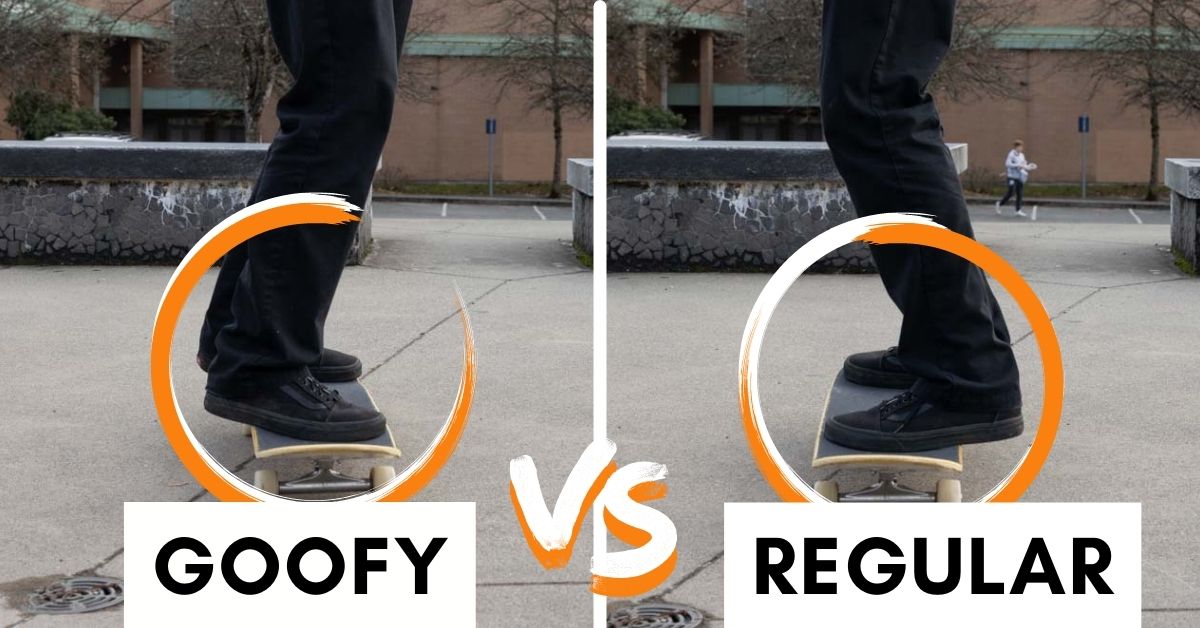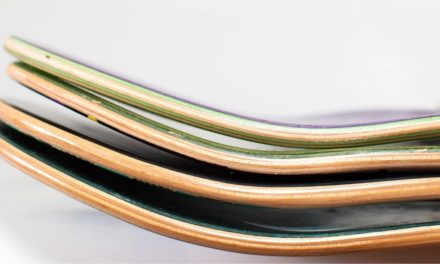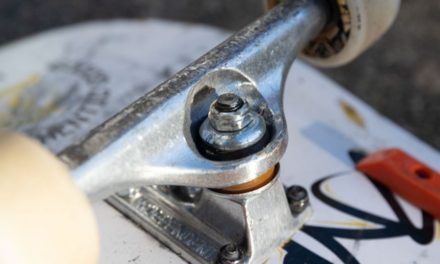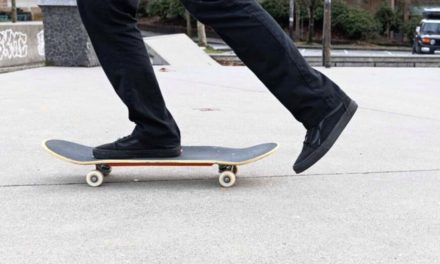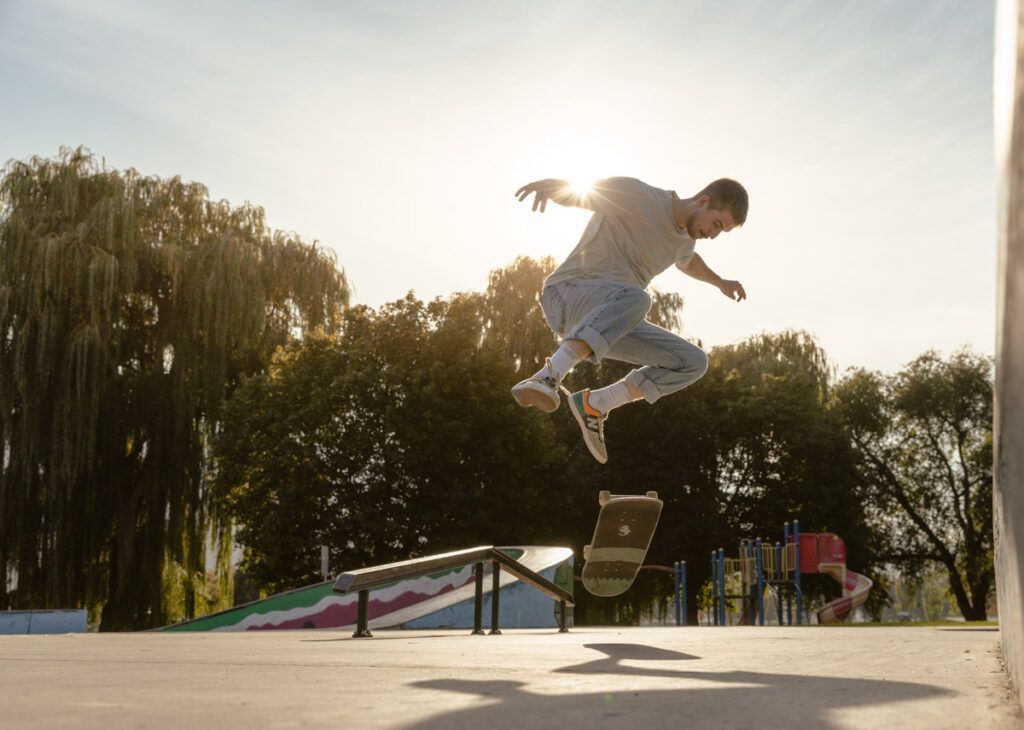Whether you’re skateboarding, snowboarding, surfing, or wakeboarding, knowing whether you’re goofy or regular is kind of a big deal. Without knowing which stance feels right for you, you can end up forcing yourself to ride in a way that doesn’t feel natural.
And unfortunately, you can’t just copy whatever stance your friend has because everyone has a different preference.
Luckily, it’s easy to find which stance is right for you with a few easy techniques you’ll learn later in this post. Then once you know whether you’re goofy or regular, your board stance will cross over with any board sport you try in the future.
Before we get into how to find your stance, let’s first cover the differences between goofy and regular and how they might impact your skateboard, snowboarding, surfing, and other board sports.
What’s The Difference Between Goofy & Regular Stances
The difference between goofy and regular stances is which foot is forward on your board. With a goofy stance, your right foot is forward, and your left foot is back, while a regular stance is the opposite with your left foot forward and your right foot back. This is decided on personal preference.
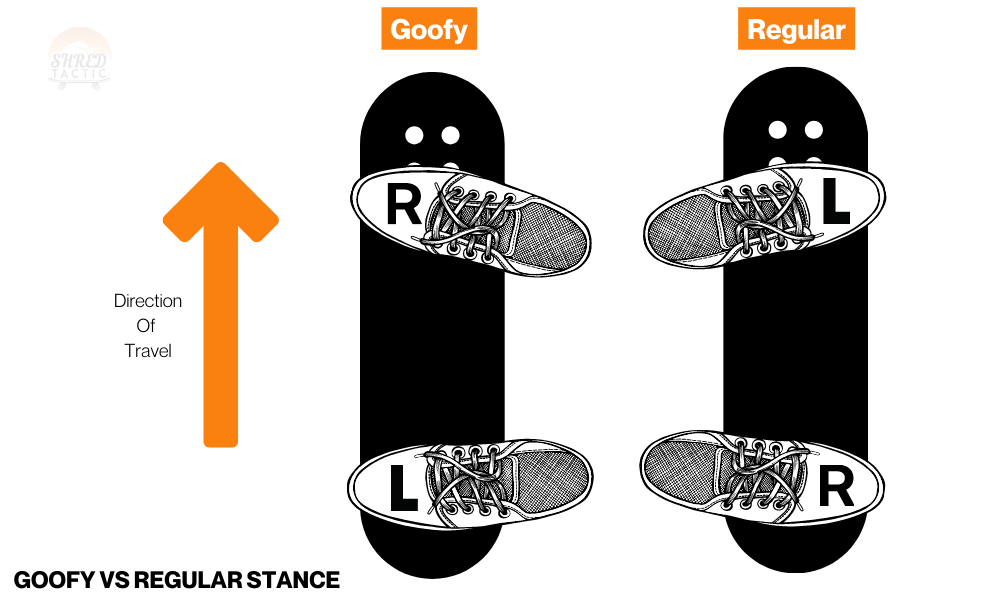
Although goofy and regular stances mean the same thing across all board sports, there is another thing to consider with skateboarding which is your pushing foot.
When skateboarding, a goofy rider will push with their left foot since it is their back foot in the stance. Regular stance skaters do the opposite, pushing with their right foot since their left foot is forward.
Although you might think that the name “goofy” means there’s something wrong with it, that’s not the case. There is truly no difference between the two stances in terms of difficulty or trick options. It all comes down to personal preference and what feels most natural to you.
Why’s It Called “Goofy”?
It’s hard to exactly trace back the origin of the term “goofy stance,” however, it’s thought to have originated in the early 60’s in Hawaii surf culture. In Desmond Muirhead’s “Surfing in Hawaii: a personal memoir” in 1962, he is quoted referring to those surfing with their right foot forward to be “goofy footed.”
This is thought to be because of the fact riding with your right foot forward (goofy) is slightly less common than riding with your left foot forward (regular). Although the numbers between goofy and regular stance preferences are pretty darn close, as I’ll break down later.
Another theory for the origin of this term is from a Disney film released in the early 1950s where Goofy (as in the cartoon character) is shown surfing with his right foot forward. This is a fun idea to go off of, but I’m not fully convinced of how accurate that one is.
Is It Better To Ride Goofy Or Regular?
There is no incorrect way to stand on a skateboard, snowboard, surfboard, or any other type of board. Both goofy and regular stances are legitimate and are purely based on what’s most comfortable to you. Just as some people write with their right hands, while others with their left, it doesn’t impact their ability to write. The same is true for board stances, regardless of which foot is forward, it doesn’t affect your ability to ride.
So Should You Skateboard With A Regular Or Goofy Stance?
You should skateboard with whatever stance feels more comfortable to you. Although some features at a skatepark or a street spot may favor one stance or another for frontside or backside tricks, there is no distinct downside to either footedness. With skateboarding, however, your stance will dictate which foot you push your board with, as I mentioned earlier.
With a proper pushing technique, you use your back foot to push. That means goofy skaters push with their left foot while regular skaters push with their right. Some people end up pushing with their front foot, which is known as mongo in skateboarding.
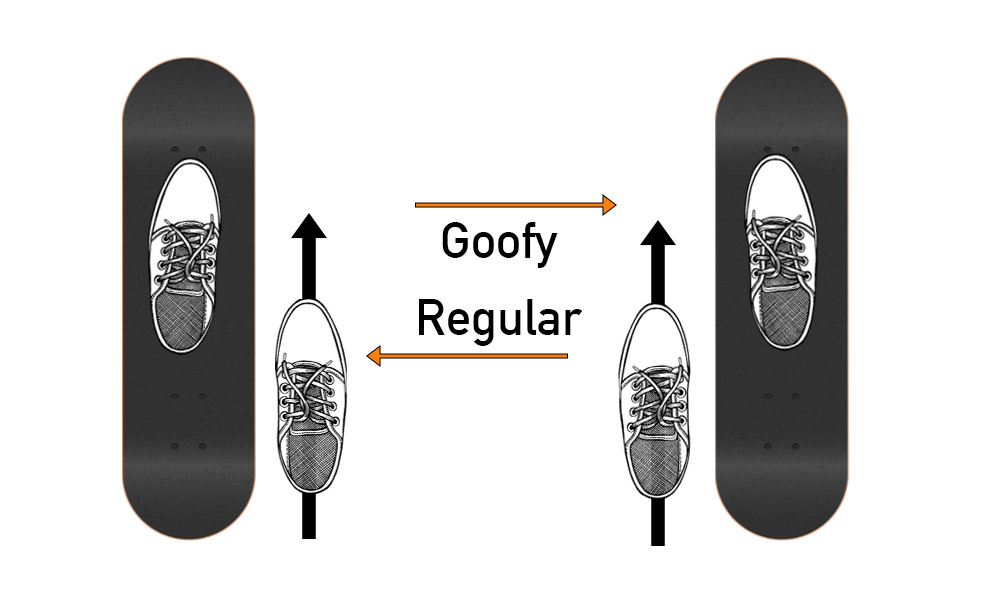
This isn’t uncommon for new skaters since they may feel more comfortable pushing with the same foot that is at the front of their board. However, pushing mongo can hinder you in the long run as it makes it more difficult and less efficient to set up for tricks after pushing.
Ultimately, when it comes to skateboarding, you should focus on what stance feels more comfortable when actually riding your board. The pushing might feel awkward regardless of your stance at first, but it’s something you’ll grow accustomed to.
Do More Skaters Ride Goofy Or Regular?
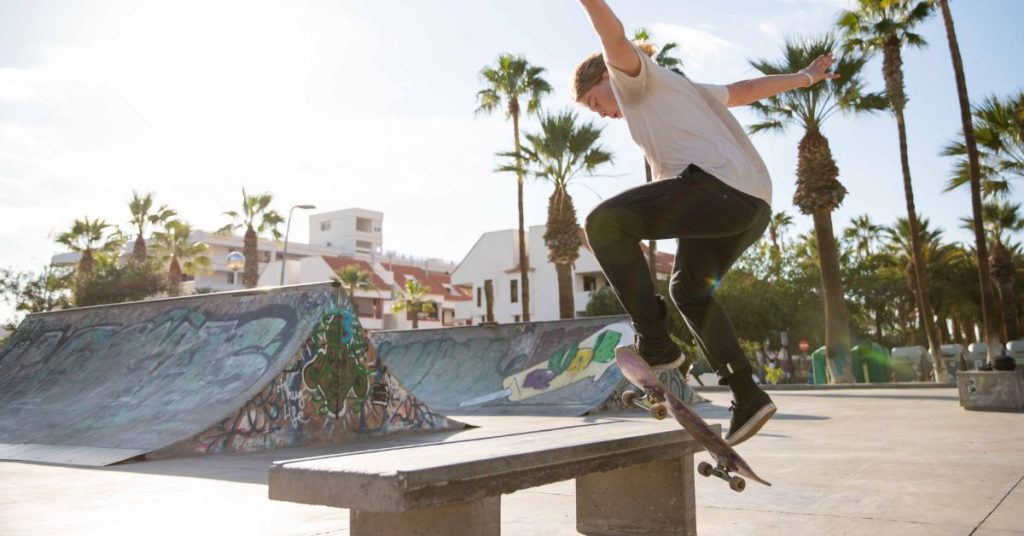
Despite the term “goofy” making it seem as though it’s an irregular stance, the stats prove that’s not the case.
In a study done on 4000 skateboarders, 44% had a goofy stance, while 56% had a regular stance making it a nearly perfect split.
If you take a look at any skatepark you go to, you’ll likely see a pretty even split between everyone’s stances as well. So if you realize you’re not the stance you were hoping to be, just remember that it truly doesn’t matter, and you have 50/50 odds of being either or.
Does Being Right Or Left Handed Affect Your Stance?
According to Scientific America, 95% of the population is right-handed, while only 5% of the population is left-handed. As for those ambidextrous, there were too few out there to account for in the study. Placing this stat against the stat of 44% of skaters being goofy and 56% being regular disproves the idea that your dominant hand affects your stance.
So even if you write with your right hand, that doesn’t mean you’ll feel more comfortable riding with your right foot forward (goofy stance).
The same thing is true with how you kick a ball. Although most people probably favor their right foot when playing soccer, that’s not a sure sign that’s their dominant foot with board sports.
So how exactly can you tell your footedness if your writing hand or dominant foot in sports can’t be trusted? Well, there are a few easy tricks to try at home.
How To Tell If You Have A Regular Or Goofy Stance
Option 1: Try To Leap Between Two Points
The first way to tell your stance on a board is to try to imagine you’re leaping between two imaginary points. You can either do this standing still or run and leap to see what foot leads in your jump. An easy way to set this up for yourself is to try and leap over a patch of grass or between two cracks in the pavement, pushing off of one foot and landing on another.
Typically, the foot that you lead with in your leap will be the foot that defines your stance. For example, I have a goofy stance, so when I try to do this, my right foot always leads the jump.
The only problem with just trying one option to find your stance is that you might overthink it and get the wrong result. That’s why it’s best to try the following two methods as well, then compare all your results to see which foot you favor the most.
Option 2: Have Someone Gently Push You From Behind
The second way to tell if you’re goofy or regular is to fall forward and see which foot catches you. Although you can do this by yourself, I’ve found that it’s hard to get a candid reaction when you know when you’re about to fall forward. That’s why having someone gently push you from behind ensures you are reacting naturally.
Of course, the point here isn’t to get shoved hard. Instead, get someone to push you forward just enough to knock you off balance while standing still. With this “surprise,” you have less time to overthink which foot to catch yourself with, and your body will react more naturally.
More often than not, the foot you catch yourself from falling with will be the front foot of your stance.
Option 3: Run & Slide Across The Floor In Socks
The final way to discover your stance is to put on your favorite pair of slippery socks and slide across your living room. Taking a few good strides to pick up speed, stop your feet so that you slide across the floor. This forces you to naturally slide almost as you would stand on a board.
After doing a few slides, take a look at how your feet are positioned. This is one of the most fool-proof ways of finding your stance since there’s a lot less to overthink, and your body just does what feels the most natural. In fact, it was this method that helped me figure out my stance when I first started skateboarding and snowboarding.
Like I mentioned before, I’d suggest giving all of these techniques a try to help find your stance and see which foot you seem to favor. Whatever foot is more favored between all three exercises is very likely to be your front foot for all board sports.
Goofy VS Regular VS Mongo Stances On A Skateboard
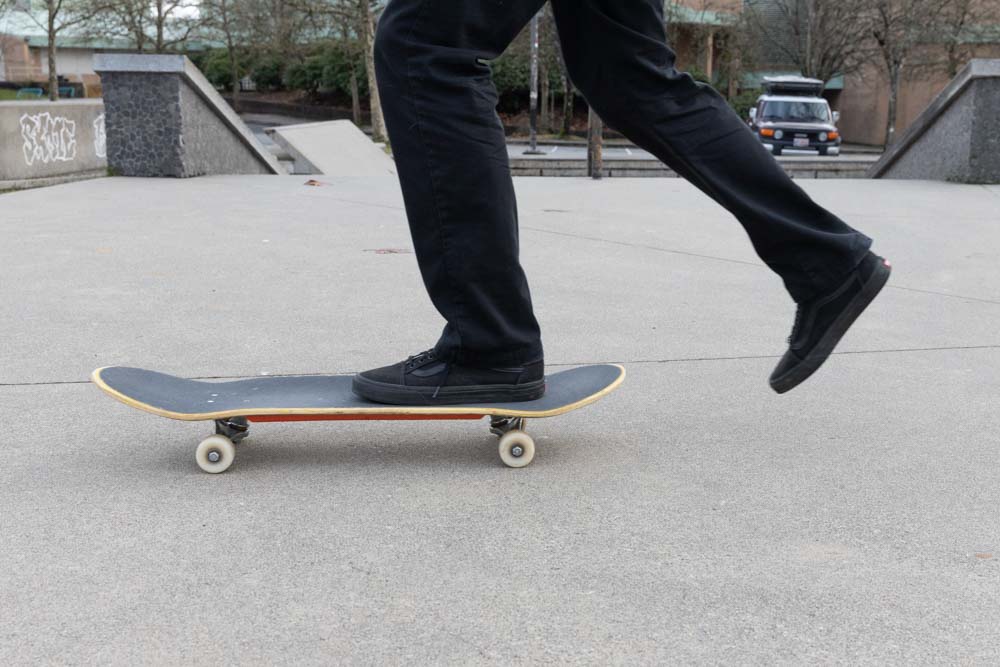
In skateboarding, you’ll hear an added type of stance known as Mongo. The difference between Goofy, Regular, and Mongo is which foot a skater pushes with. Both Goofy and Regular skaters push with their respective back foot (left foot for Goofy, right foot for Regular). However, Mongo skaters push with their front foot regardless of their stance.
Typically Mongo is made fun of by the skate community as the “incorrect” way of pushing and riding a skateboard. However, it doesn’t necessarily affect one’s ability to ride a skateboard. The only downside to mongo is the fact that your front foot is removed from the board to push, therefore making you less stable and less efficient when you need to pop a trick.
So if you find yourself pushing mongo, I’m not going to say you need to change anything. However, there’s a clear advantage to pushing with your back foot instead, regardless of your stance.
Goofy VS Regular On A Snowboard
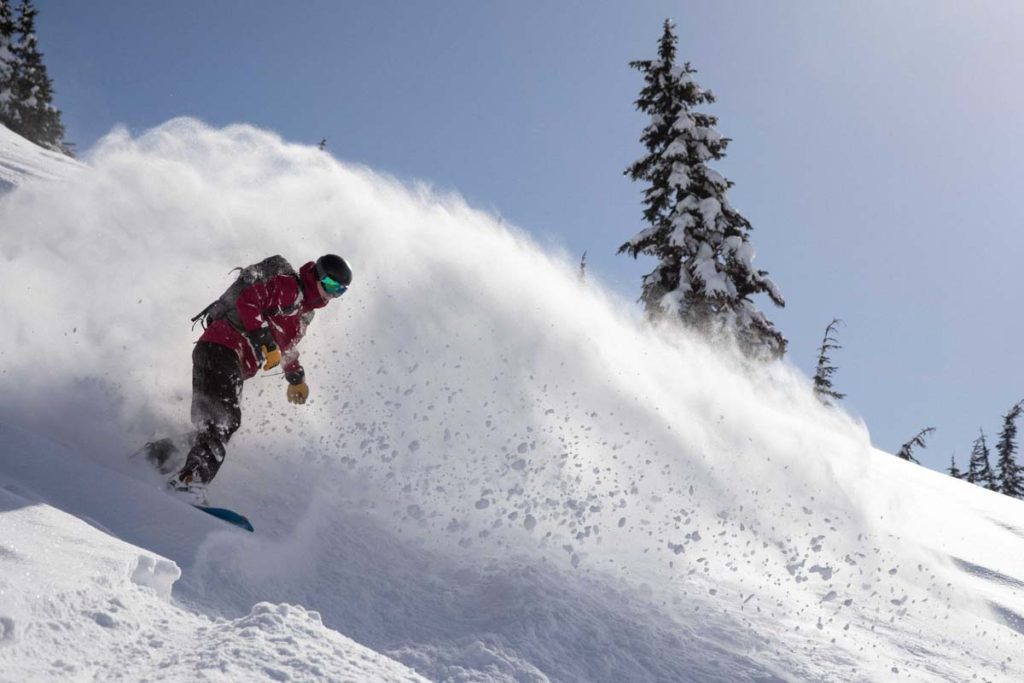
Although you can still find your stance using the three techniques mentioned earlier, your stance will ultimately affect your snowboard setup. Since your bindings will be placed at different angles based on your stance, it’s important to figure this out before you get to the hill.
Typically, the front binding will be angled more outwards compared to the back to favor a more natural and comfortable riding position. Meanwhile, the back binding has less of an angle since it’s not pointed in the dominant direction of travel.
For example, my front binding on my snowboard is usually at +15, while my rear binding is at -9. This allows me to favor my dominant stance and feel more stable at speed but doesn’t make me feel too twisted when riding switch.
Another reason knowing your stance is important is for your binding placement. Some snowboarders will place their bindings slightly closer to the tail to get more float in deep snow. Since this is a huge pain to change later on, this is another example of why knowing your stance will make a huge difference in your snowboard setup.
Goofy VS Regular On A Surfboard
Now when it comes to surfing, knowing your stance isn’t necessarily as crucial as snowboarding. However, it does play a role in how confidently you can stand up when you catch a wave.
Again, you can use the same methods to find your stance as I talked about earlier to remember which foot is your “dominant” foot for board sports.
From there, just remember which foot to lead with when you go to stand up or even practice on the beach to commit it to memory.
What Does Switch Stance Mean?
Riding a skateboard, snowboard, surfboard, or longboard in the opposite of your normal stance is known as “riding switch” or having a “switch stance.” For example, if a normally goofy footed rider (right foot forward) began riding switch, that would mean their left foot is now forward. The opposite would be true for regular stances riding switch.
The reason people ride switch is to increase the degree of difficulty in a trick. Especially in a contest setting, switch tricks will score more points simply because of how much less natural they are to the rider.
As for casual riders, learning to ride switch can help to challenge the tricks you already feel comfortable with in your normal stance. It can also allow you to feel more comfortable with 180 or 540 spins where you land in a switch position (or fakie in the case of skateboarding).
What Does Fakie Stance Mean?
Fakie is a term most commonly used in skateboarding which refers to a trick done in a skater’s normal stance (either goofy or regular) but moving in a backward direction. The difference between fakie and switch is that the tail of the board is still leading the direction of travel in fakie, while with switch, the foot positioning is altered instead.
An easy way to imagine fakie is if you were to ride up a hill in your normal stance, then begin to roll back without changing your foot position. This would put you into a “fakie stance” or riding position.
Does Your Stance Cross Over Between All Board Sports?
Once you know whether you are goofy or regular on one type of board (skateboard, snowboard, surfboard, etc.), your stance will transfer over to any other board sport you try. Although each sport has its differences, the way you stand and feel most comfortable traveling on the board will remain the same. Therefore, if you’re goofy on a skateboard, you will be goofy on a snowboard or a surfboard too.
Now there are very rare exceptions to this, but it’s safe to assume that your stance will transfer over between all sports. So once you do the work of figuring out your stance, you’ll never have to figure it out again in other board sports you try!
Happy Shredding!

